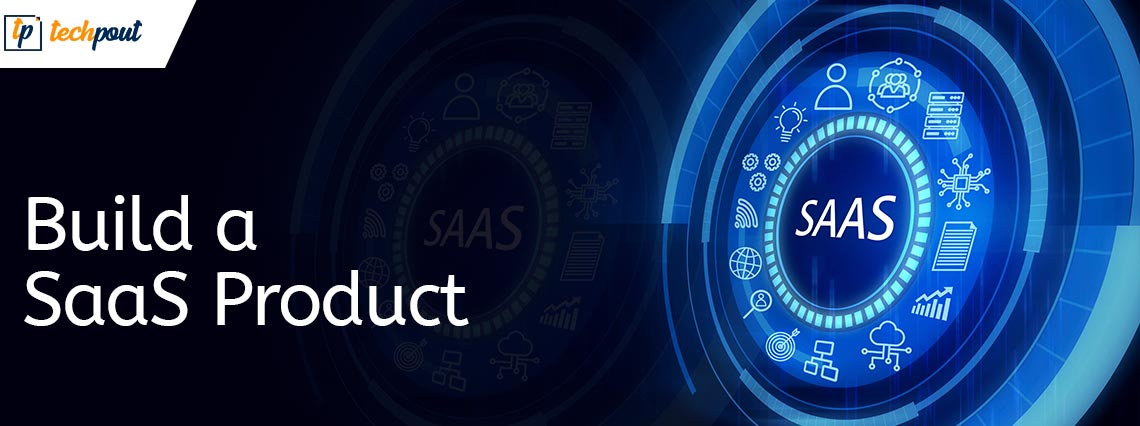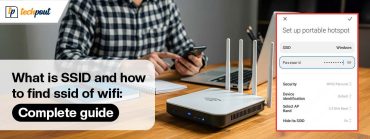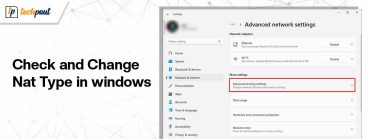How to Build a SaaS Product From Scratch

According to Market Research Report, the SaaS market is expected to grow from USD 130.69 billion in 2021 to USD 716.52 billion in 2028. Quite a fascinating number, isn’t it?
The following question raises for any company that wants to be out in front: how to build a SaaS product?
In this article, we’ll help you to discover what SaaS technology is, the stages of building a SaaS application and why SaaS-based solutions are vital to run and developing your business.
Let’s get the ball rolling.
What is a SaaS product?
SaaS, or software as a service, is an alternative to traditional licensing models. Such applications are hosted on the cloud for the users to access apps without downloading any software to their computers. SaaS applications work best for people who need to use them regularly as they pay for them by subscription instead of paying a big sum of money upfront. Many companies give freemiums – a basic version of their software for free. Hence, you can try the app without obligations and pay once you are sure that the functionality suits your needs.
Even if you are in the dark about SaaS, you must have used the SaaS software.
Among legendary SaaS providers are:
- Oracle provides a complete suite of integrated corporate cloud apps and a cloud infrastructure platform.
- Slack lets employees from one organization communicate with each other through messages, audio, and video calls.
- Microsoft 365 provides users access to productivity apps for email, collaboration, communication, and file storage.
- Zoom enables users to set up video and audio conferencing, live chats, screen-sharing, etc.
- Adobe gives access to a range of software used for graphic design, video editing, web development, and photography.
- Shopify allows users to build and customize online stores and sell their goods in various locations.
It’s not only companies that benefit from SaaS software. In 2031, Barcelona started transferring services for citizens and guests of the city to the cloud. Among the online services available on one platform are urban transportation, traffic, waste disposal, noise, water, and energy.
Types of SaaS
There are two main types of SaaS distribution models:
- Vertical: The apps provide niche-specific software solutions. It is created by people with expertise in the specific industry it targets. For example, Clio only serves law firms and goes deep into optimizing the unique processes of this type of business.
- Horizontal: The platforms cater to the needs of various industries. They focus on satisfying common business needs rather than individual customer ones. For example, Hubspot provides different businesses with broad marketing instruments, including SMM, SEO, content management, web analytics, customer service, customer support, and customer experience.
While both use the same distribution model, the difference lies in how they serve their customers and who those customers are.
Advantages of SaaS products
To explain the sudden boom of SaaS products, let’s figure out what benefits users and app owners get. These points will also give you a clearer picture of why to build a SaaS-based product. Let’s get the show on the road.
Pros of SaaS for users
Besides being affordable for many demographics, customers can benefit from cloud-based applications’ accessibility, instant, and regular updates, scalability, and reliability.
- People can use cloud-based apps immediately after logging in from any device. There’s no need to wait for the app to install. The only thing that users will need to get all the benefits of SaaS products is a stable internet connection.
- Instant updates. While mobile and desktop users still need to download new software updates to ensure they got the latest versions, cloud-based app users have a considerable advantage. They get the latest updates in the wink of an eye and without effort. The web apps are upgraded automatically.
- If the user’s requirements change, they can upgrade or downgrade their plan effortlessly. The user can cancel the subscription at any time. Also, it’s an excellent chance for users to test an app’s functionality without losing money.
- The cloud is a network of servers not tied to any location. So even if one server goes down, the user will still be able to use the app online.
Pros of launching a SaaS product
All these user benefits contribute to the growing popularity of SaaS applications in the market. And this is already an argument for launching your product with SaaS software, especially since there are more pros for you. Let’s dig deeper and get a larger picture of the perks of building your SaaS product:
- Ability to enter a fast-growing market. Considering the wide range of services it can provide users, the SaaS market is developing fiercely. According to a BetterCloud report, 85% of all businesses will choose cloud-based software solutions.
- Ability to attract a large number of customers. We have already mentioned the benefits that the users of SaaS applications No wonder the range of customers will increase noticeably moving forward. In addition, the customer-friendly monthly subscription makes cloud-based software affordable even for new enterprises with a limited budget.
- Regular and long-running income. The SaaS application enables app owners to get a stable income through a monthly subscription. It gives them the time and opportunity to create and develop new features to keep their subscribers happy and satisfied and to grow their user base.
SaaS app development in six easy-to-go steps
So if you want your SaaS-based product to make good, we recommend you to follow these six steps of cloud-based software product development stages: study the market, develop the business plan, define SaaS requirements, choose the technical stack, form a development team/outsource, and build an MVP.
1. Study the market
At the outset, you should have the facts straight about whether the SaaS product you want to build is a good idea. Look before you leap and study the market niche you want to get to. Before building a SaaS product, answer a few fundamental questions:
- What audience do you want to target?
- What are the main pains of your audience?
- How will your app solve these problems?
- Who are your rivals?
- What are their unique features?
- How will your product be different from theirs?
- What business model do they apply?
These questions will help you to shape your vision and define the market requirements. A clear target description will benefit you in convincing customers to select your SaaS product among your competitors.
Analyzing the market along with your rival’s failures and successes will guide you in choosing the strategy of building a SaaS product that will be both preferable for you and in demand in the market.
2. Develop the business plan
The business plan is your road map in leading your future cloud-based application to success. Let’s examine the essential questions you should answer in your plan to assist in building a SaaS product.
- What makes your product stand out among others? It can be your brand identity and the values you want to inflame in your customers. What about making it your brand’s slogan?
- What pains of customers do the products address, and how can you help to solve them? Define the problems you want to solve with your SaaS app.
- How do you reach your target customers? Decide the marketing strategy that you want to employ to promote your cloud-based application.
- How do you receive income through the app? Define your monetization strategy. Think of different subscription plans, upgrades, and advanced support. You can use freemium, flat-rate, usage-based, tiered, or per-feature fee options.
- Where do you get financial support to launch the product? Define the funding source for launching your product. It can be your own budget, crowdfunding, or outer investments.
- What are the further goals of the product? Think of the next steps for your enterprise development in the upcoming years.
Your plan might need some adjustments in the process, but it’s good to have everything clear before moving to the following steps. It will save you from any unexpected occasions.
3. Choose the technical stack
The next step in the product development lifecycle is the choice of the technology stack, which is a list of the programming languages, tools, and frameworks used in software development. There’s a wide variety of them, and there’s no cure-all.
Let’s dwell on the needed SaaS app development elements and the most recommended solutions to cover them.
Front-end
Front-end development is the creation of the part of the app that users see on the screens, the app’s UI. For front-end development, you will need advanced JavaScript frameworks that suit the SaaS product development lifecycle – Angular, React, or Vue.js.
Back-end
Back-end development is in charge of the server-side, or the functionality of the application. Back-end development is invisible to the users, it builds the core of your SaaS product. The backend is responsible for interaction with the server and data processing.
Using a reliable framework, such as Ruby on Rails, Node.js, or Laravel, would be best.
Database
Databases maintain the essential information for your applications. The best options are PostgreSQL, MySQL, or Microsoft SQL Server.
SaaS hosting provider
To fill the SaaS product development bill, a dependable cloud provider will serve, such as Google Cloud, Amazon (AWS), Microsoft, or Heroku.
4. Create your team
No doubt that the future of your product is dependent on the people who work on it. Let’s define who you need:
- Business analyst;
- Designer;
- Frontend and backend software developers;
- Quality assurance engineer;
- Project manager.
Depending on your business needs, you can choose from the following three options:
- Internal-team. This option suits companies that have a permanent ongoing workload and have already gained some success. The benefit of this approach is overall control over the SaaS product development lifecycle.
- Freelancers. It is the cheapest option. Freelance workers might have ample expertise in specific fields and technologies. But you need to manage their work and check on them constantly because there is a good chance they will be unreliable.
- Custom software development company specializing in building SaaS products. It is a convenient middle ground between previous options. This approach will be feasible for companies of all sizes with different project scopes. You get a remote team providing high-quality product development services without losing your time to supervise their work, and pay once the results are achieved.
5. Build an MVP
The best way to launch an outstanding cloud-based application is to start with an MVP. MVP, or minimum viable product, is a product that includes the only essential features to meet the basic needs of early customers. Once you launch the product, you can gather feedback and validate a product idea early in the product development lifecycle. It will help to check what features should be improved and determine what new functionality your users want to see next.
Conclusion
The SaaS model created a great variety of business opportunities. But to build a good product, an idea alone is not enough. You must go through all the phases of software development and study your audience and competitors well. And of course, the team’s choice plays a significant role. If you want to give SaaS product development a whirl, save this article as your guideline to enter the market with a first-rate product.


